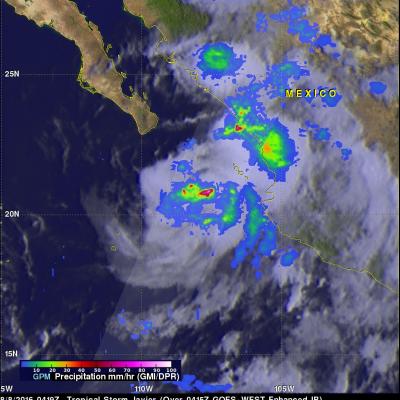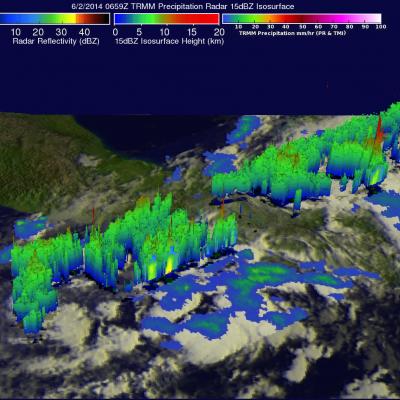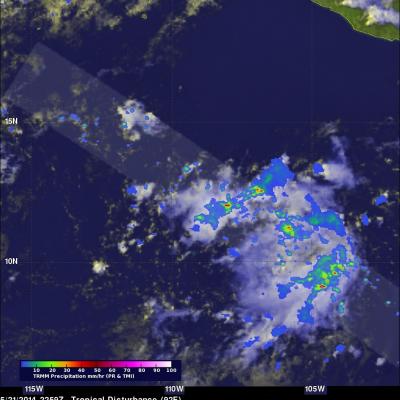Tropical Storm Javier Forms In The Eastern Pacific
Tropical storm Javier formed on August 7, 2016 in the Eastern Pacific Ocean off Mexico's western coast. Javier formed partially from the remnants of Hurricane Earl. Landslides caused by heavy rainfall from Hurricane Earl caused the reported deaths of at least 39 people in eastern Mexico. The GPM core observatory satellite flew above tropical storm Javier on August 8, 2016 at 0419 UTC. Rainfall was analyzed using GPM's Microwave Imager (GMI) and Dual-Frequency Precipitation Radar (DPR) instruments. Those data showed that Javier was producing heavy rainfall both near the center of the tropical




